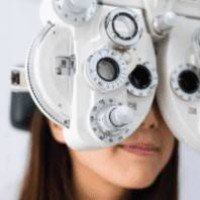Many people assume laser eye surgery is only used to correct refractive error, when in fact, it can also be used to treat a wide range of other eye conditions, especially retinal diseases.
Pan-Retinal Photocoagulation
If blood supply to the retina is disrupted, ischaemic tissues may trigger abnormal vessel growth. This may lead to complications such as vitreous hemorrhage or elevated eye pressure. Pan-retinal photocoagulation, which targets the peripheral retina, can help alleviate the metabolic imbalance, divert nutrients to the macula and preserve central vision. This type of laser treatment is commonly administered to patients with proliferative diabetic retinopathy and ischaemic retinal vein occlusion.
Barrier Laser
Any break on the retina may allow fluid to seep through and ultimately cause retinal detachment. Laser treatment can create a barrier around the retinal degeneration or break to reduce the risk of retinal detachment. Barrier laser can also be used to limit the extent of localized retinal detachment.
Focal Laser
Diseased blood vessels of the retina may leak and lead to fluid collection. If the leaky blood vessel is located outside fovea, ophthalmologists may use focal laser treatment to slow down or prevent leakage. This type of laser treatment is commonly administered to patients with macular oedema as a result of diabetic retinopathy or vascular tumors.
Grid Laser
If there is macular swelling, gentle laser applied in a grid pattern may be used to stimulate the retinal pigment epithelium to pump out the fluid collection. This type of treatment is commonly administered to patients with diabetic macular oedema.
Advancements in Retinal Laser Treatment
The pattern scanning laser system can be used to deliver laser energy in a preselected scanning pattern, thereby shortening treatment times. Micropulse laser technology delivers short energy pulses separated by rest periods, allowing treated eye tissues to cool down in order to minimize thermal damage. Laser in the yellow light spectrum has high penetration power with low level of scattering, achieving the same therapeutic effect with less energy. Thanks to continued advancements in medical technology, retinal laser treatment has become safer, more accurate, effective and comfortable for patients.


















